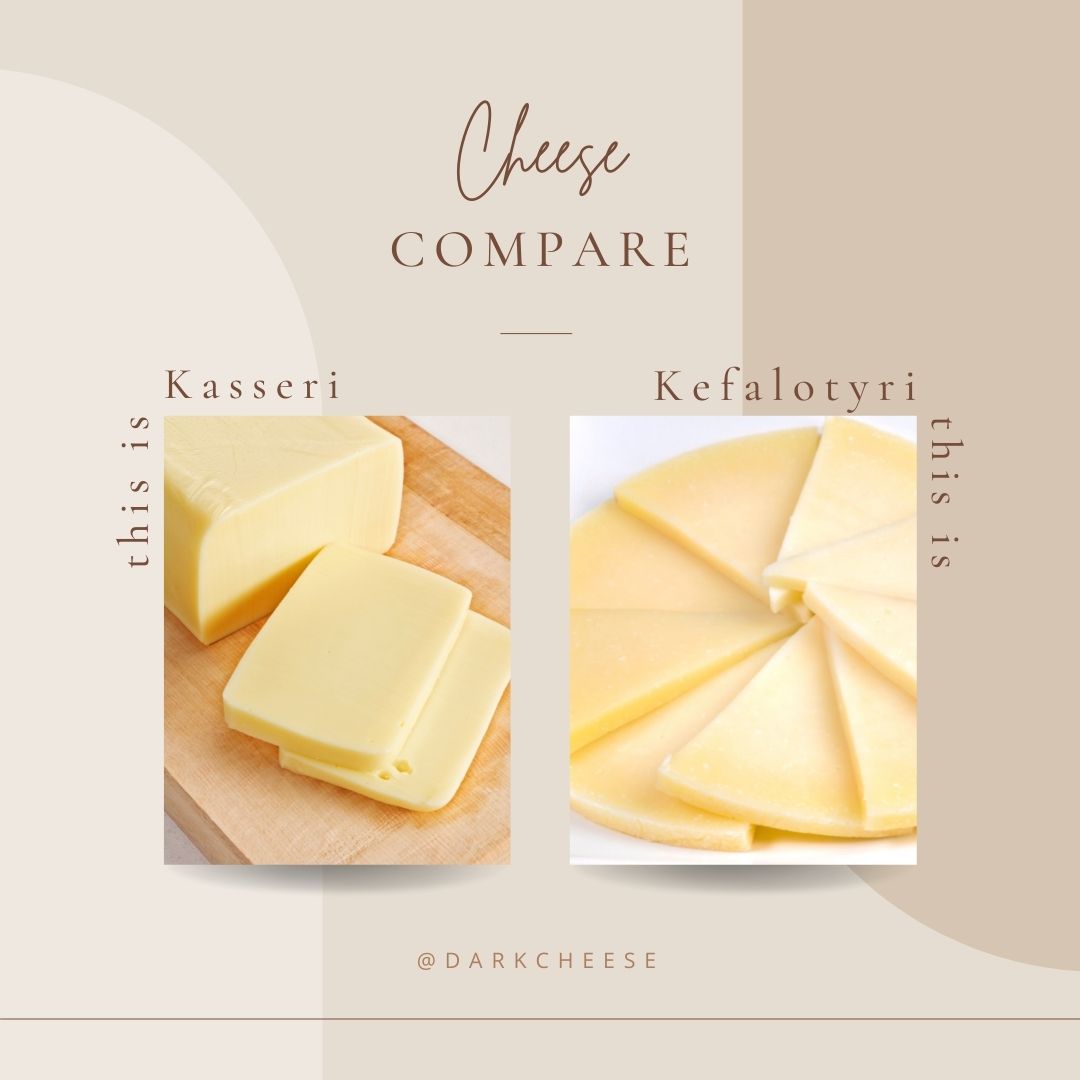Last Updated on November 5, 2022 by Aaron
Kasseri and kefalotyri cheese are two types of Greek cheeses that are very similar, but also have many differences.
Kasseri is a semi-hard cheese with a mild and light salty flavor. It can be aged for up to one year or less, depending on the type of kasseri it is. Kefalotyri, on the other hand, is an even harder cheese than kasseri and has more salt in its taste profile.
This article will cover all you need to know about these different kinds of greek cheeses!
Table of Contents
Are they the same?
Kasseri and kefalotyri cheese are not the same. Kasseri has a PDO status. They are both Greek cheese and are used in saganaki, which is a popular grilled cheese dish. They are made quite differently too. Below we will discuss the production differences.
The Flavor and Feature
The flavor profile of kasseri cheese is very different from kefalotyri. Kefalotyri has a strong and sharp flavor, which resembles parmesan or pecorino. Also, it has a more salty taste than the kasseri.
Kasseri cheese has a mild, milky, sweet, and light salty flavor, which resembles mozzarella or provolone.
Kasseri cheese has the soft texture of mozzarella but is drier and firmer. Kefalotyri’s texture is harder than kasseri. The color ranges from off-white to yellow. Kasseri is more yellow in color.
Age
Kasseri cheese is usually aged for up to one year or less, depending on the type of kasseri it is. As for the Kefalotyri, you will typically find it aged for 1 year or above.
The History
Kasseri cheese is a PDO (Protected Denomination of Origin) cheese that has been around since the 19th century and can only be made in four provinces in Greece. Kefalotyri, on the other hand, is not a protected designation of origin. It originated from the Ionian island of Cephalonia, which can be dating back to the Byzantine era.
Production
The production of Kasseri is using the pasta filata method, also known as the stretched-curd method. In this method, the curd is dipped in hot water. Then it will be kneaded and stretched until the desired texture is reached.
This same method did not use in the making of kefalotyri cheese.
Also, kasseri does not use additional acids in the making of the cheese to acid-set the curd, while Kefalotyri does. This gives Kefalotyri a higher acidity and therefore not easy to melt. Kasseri is a good melting cheese, similar to mozzarella.
The Serve and Use
Kasseri cheese is quite versatile and can be used in many dishes such as salads, pasta dishes, pizza, and of course, saganaki. Kefalotyri is mostly used in pasta dishes, salads, and saganaki. The same goes for the salad cheese feta.
Kasseri is also used in recipes that call to be folded into a mixture of eggs or other ingredients such as pancakes (syrup), souffles, desserts like cake and cookies, etc.
Nutrition
| Kasseri (STELLA) | Kefalotyri (KRINOS) | |
| Calories, Kcal | 110 | 100 |
| Protein, g | 6 | 7 |
| Total Fat, g | 9 | 8 |
| Carbohydrate, g | 1 | 1 |
| Calcium, mg | 200 | 273 |
| Sodium, mg | 280 | 451 |
| Vitamin A, IU | 400 | 200 |
| Cholesterol, mg | 30 | 25 |
The Price
For the price, kasseri is quite comparable to the kefalotyri cheese. Kasseri can be found for around $22 per pound, while the kefalotyri cheese is about $20 per pound. I went through a few sellers on Amazon and took the average prices, you may check the latest.
So, what’s the verdict?
Kasseri and kefalotyri are two different types of Greek cheeses that have their own unique flavors and features. Kasseri has a mild and light salty flavor, while the kefalotyri has a stronger and sharper flavor profile that resembles Parmesan or Pecorino.
Source: https://wjarr.com/sites/default/files/WJARR-2021-0252.pdf

